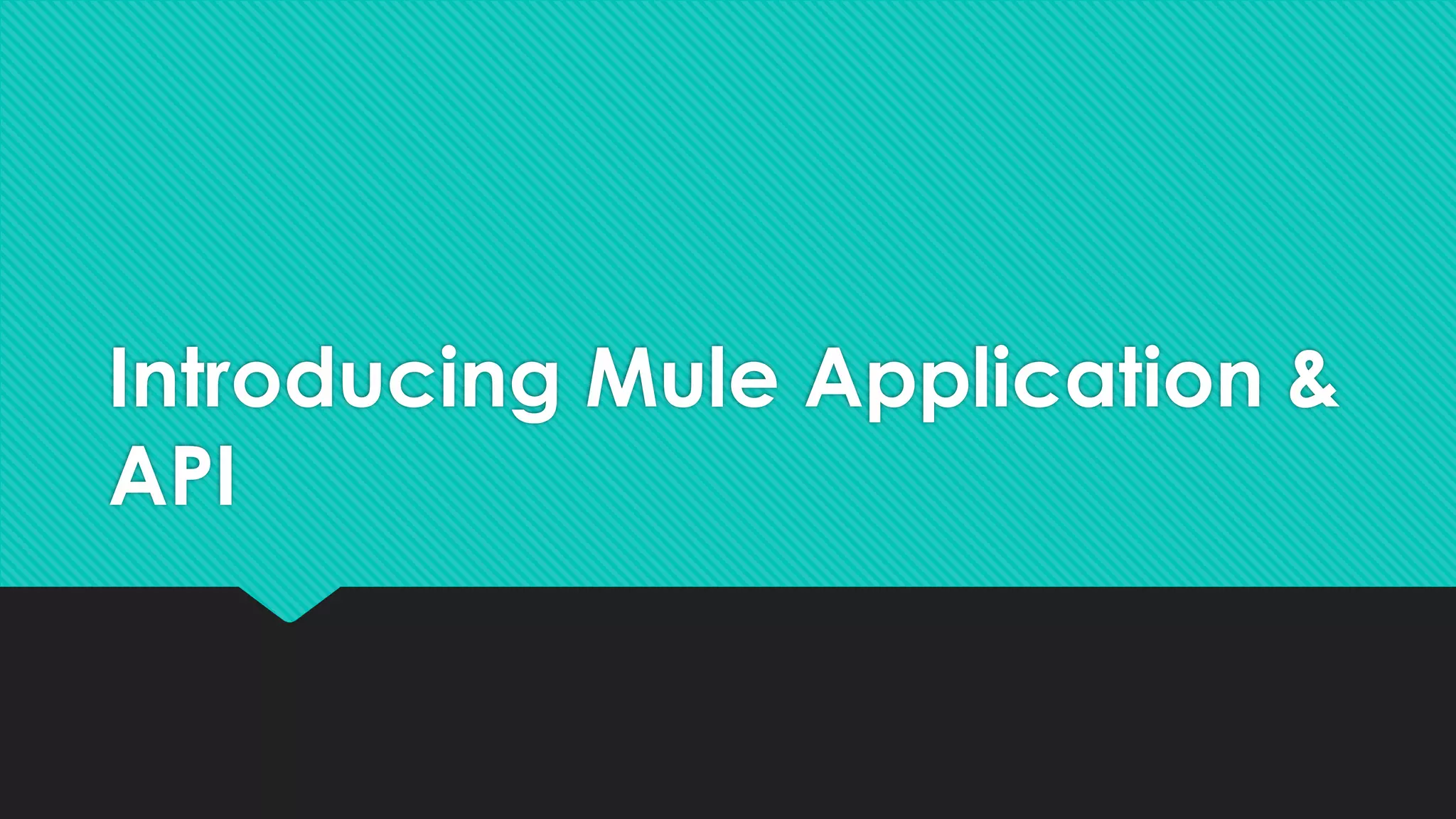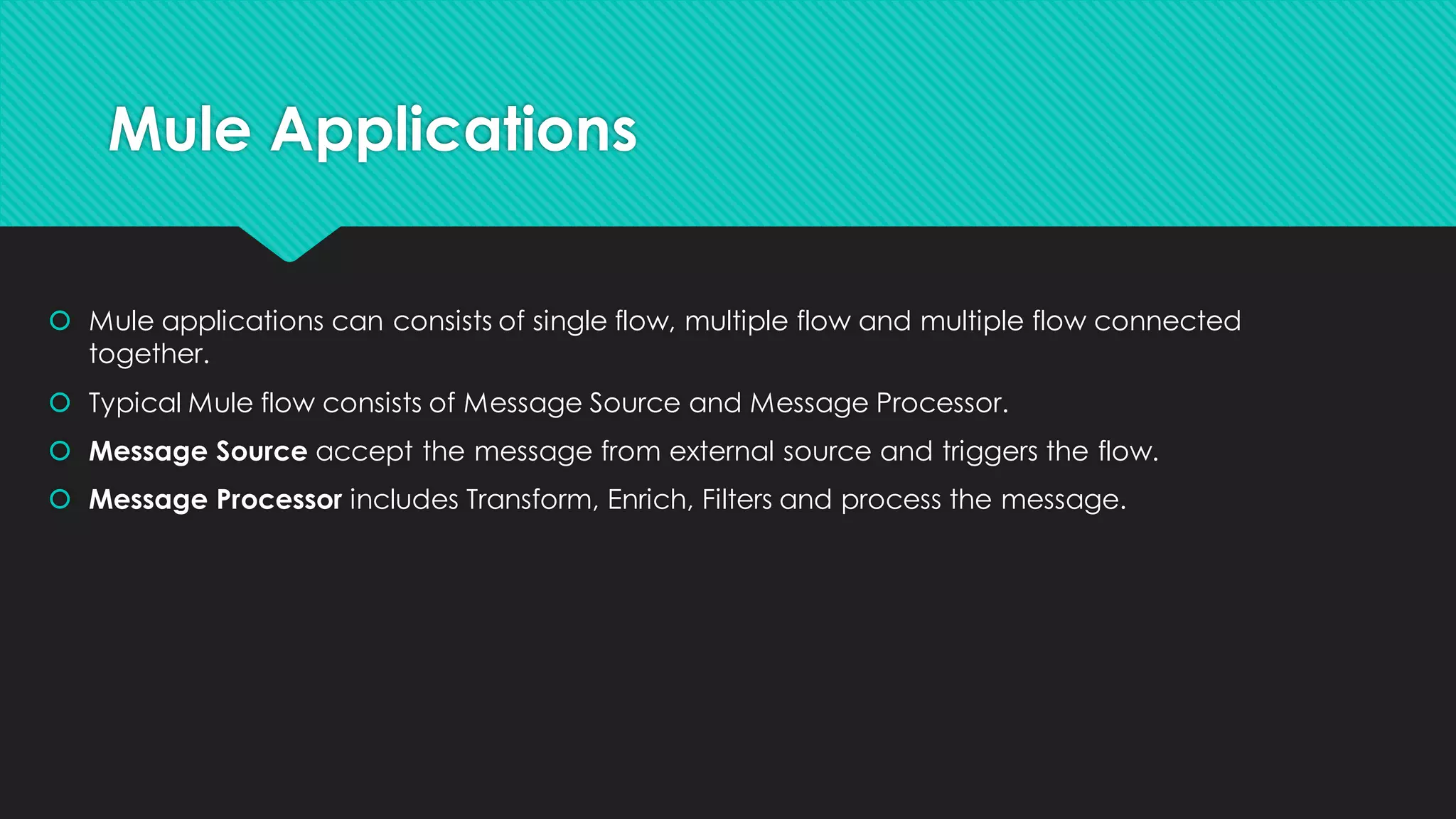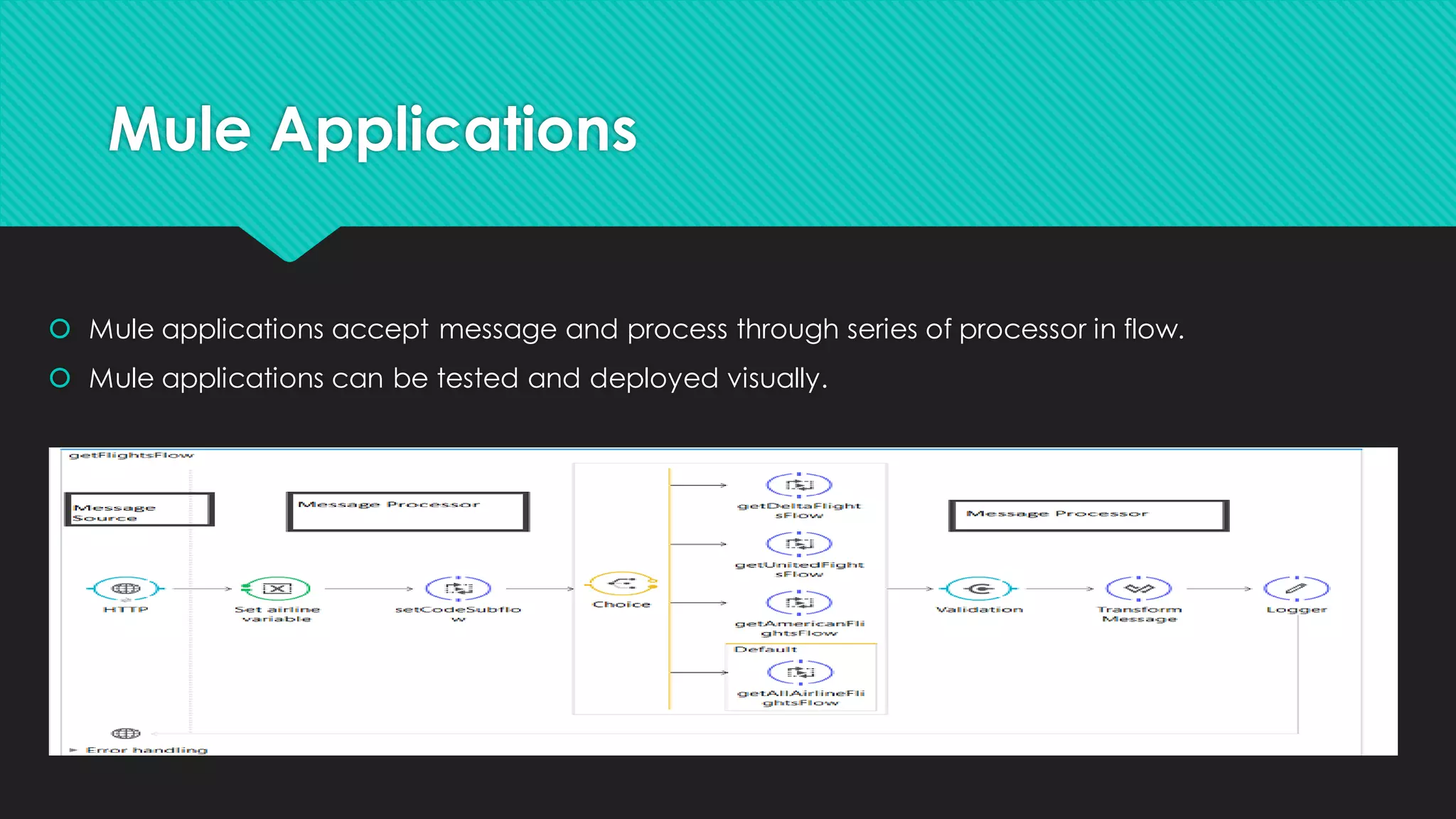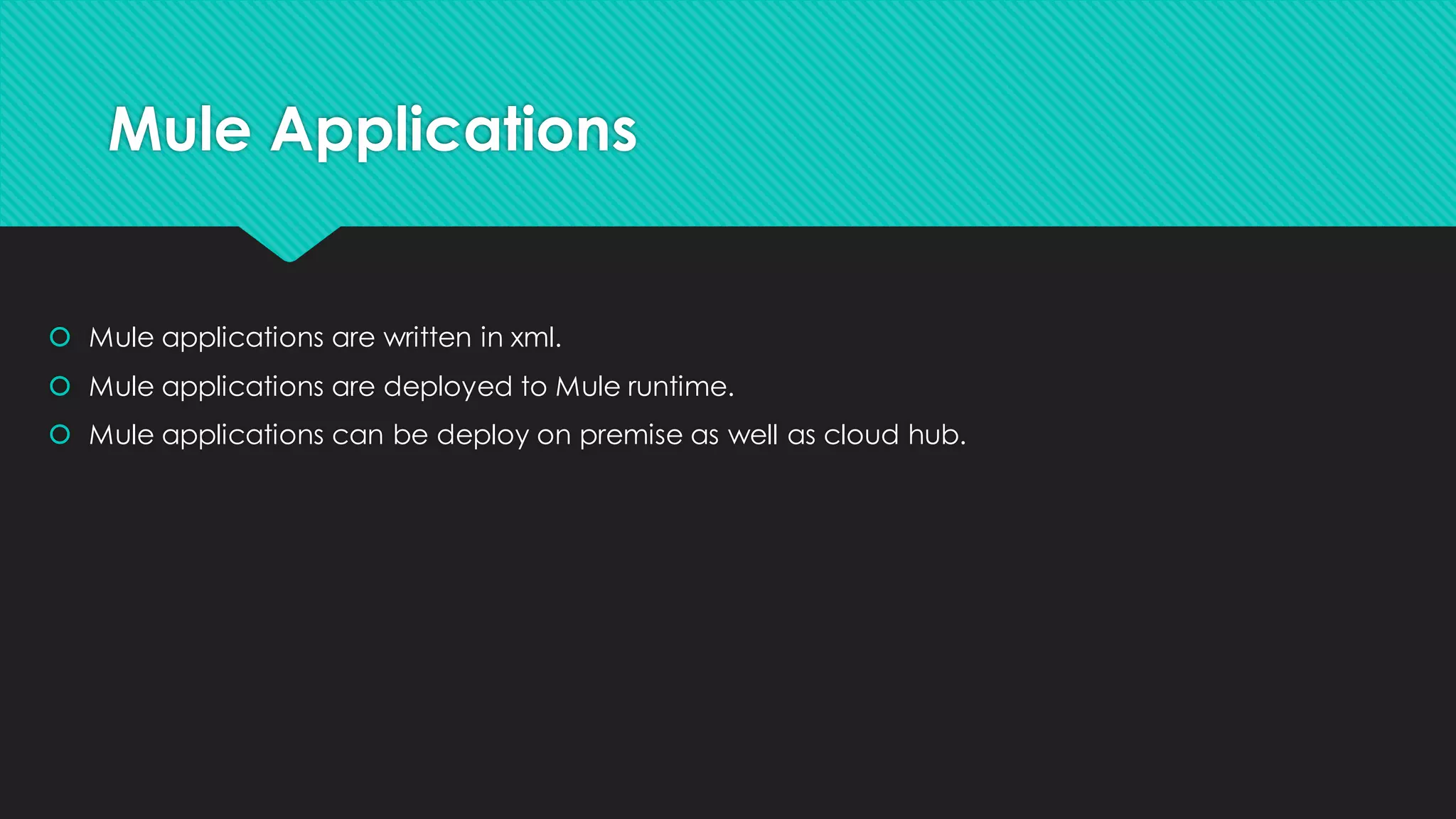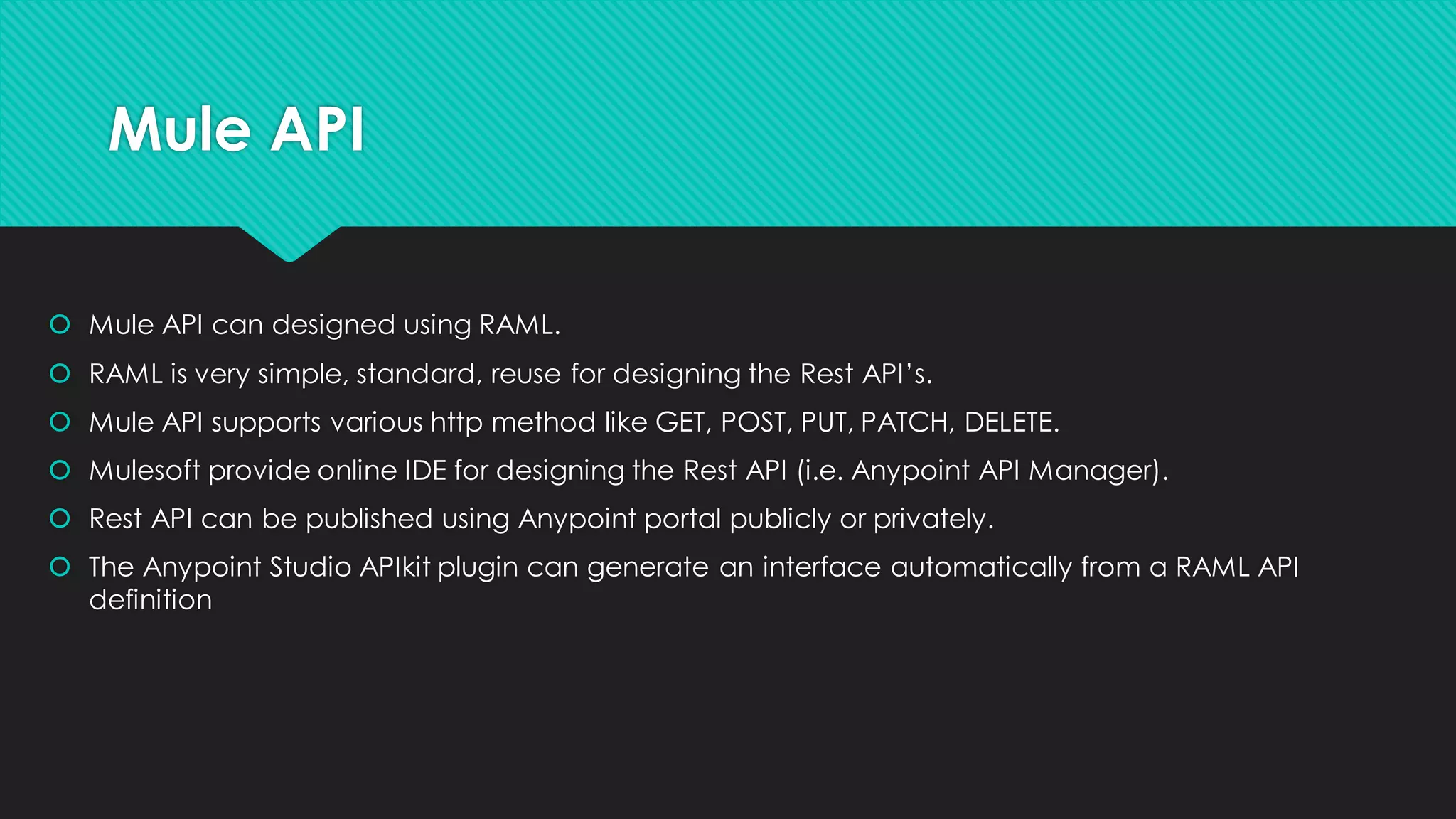Mule applications can consist of single or multiple connected flows that accept messages from external sources through message sources. Messages are then processed through message processors in a flow. Mule applications are written in XML and deployed visually to a Mule runtime, which can be on-premise or cloud-based. The Mule runtime handles requests from different applications concurrently and enforces API governance policies. Anypoint Studio is an Eclipse-based IDE that provides pre-built connectors and tools for developing, testing, and deploying Mule applications to Mule runtime editions. Mule APIs can be designed using RAML and support HTTP methods, then published through Anypoint Portal for public or private use.
